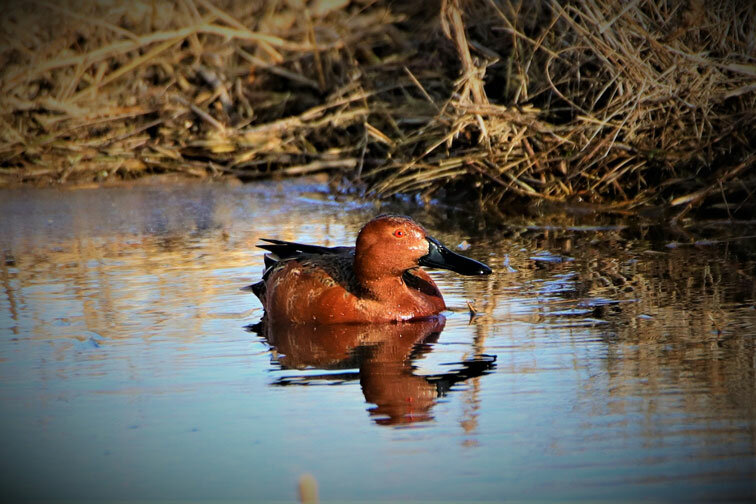
Photo by Charles Martinez
This week’s Bird of the Week, compliments of the Weminuche Audubon Society and Audubon Rockies, is the cinnamon teal.
Spot a small duck feeding near the surface on the edges of a pond or marsh, or in the shallows of a lake, and it is likely that you are seeing one of the three teal species that spend time in our area. While the females appear maddeningly similar in their mottled browns and grays, male teal in breeding plumage are colorful birds readily identified.
In the spring, colored a brilliant reddish brown, a male cinnamon teal is a standout on the water. He becomes even more beautiful when he spreads his wings in flight, revealing the sky blue wing patches which both sexes wear.
While rapidly opening and closing their large, black bills, cinnamon teal strain floating plants, seeds and insects from the water’s surface, often swimming with their heads partly submerged. They may also dabble for food beneath the surface with bottoms upended or feed on land along the banks.
Unlike the green-winged and blue-winged teal which may be found across most of North America, cinnamon teal are western birds, breeding from southern British Columbia down through California, east to Montana and south into New Mexico. In Colorado, the breeding season lasts from early April to late July.
Males lose their bright plumage soon after breeding season, when they molt into the drab plumage worn by females and immatures. Then mainly their red eye color sets them apart from dark-eyed females. Cinnamon teal begin fall migration earlier than most North American ducks, with nearly all wintering in Mexico and Central America.
In migration, marshes of the Great Salt Lake serve as one of the important staging areas for millions of migratory birds including these teal. Drought and draining of the lake for agriculture and other human uses has drastically decreased the lake’s area and increased its salinity. Many fear that without immediate action to reverse these trends, this important habitat and the birds that rely on it will disappear.
For information on events, visit www.weminucheaudubon.org and www.facebook.com/weminucheaudubon/.